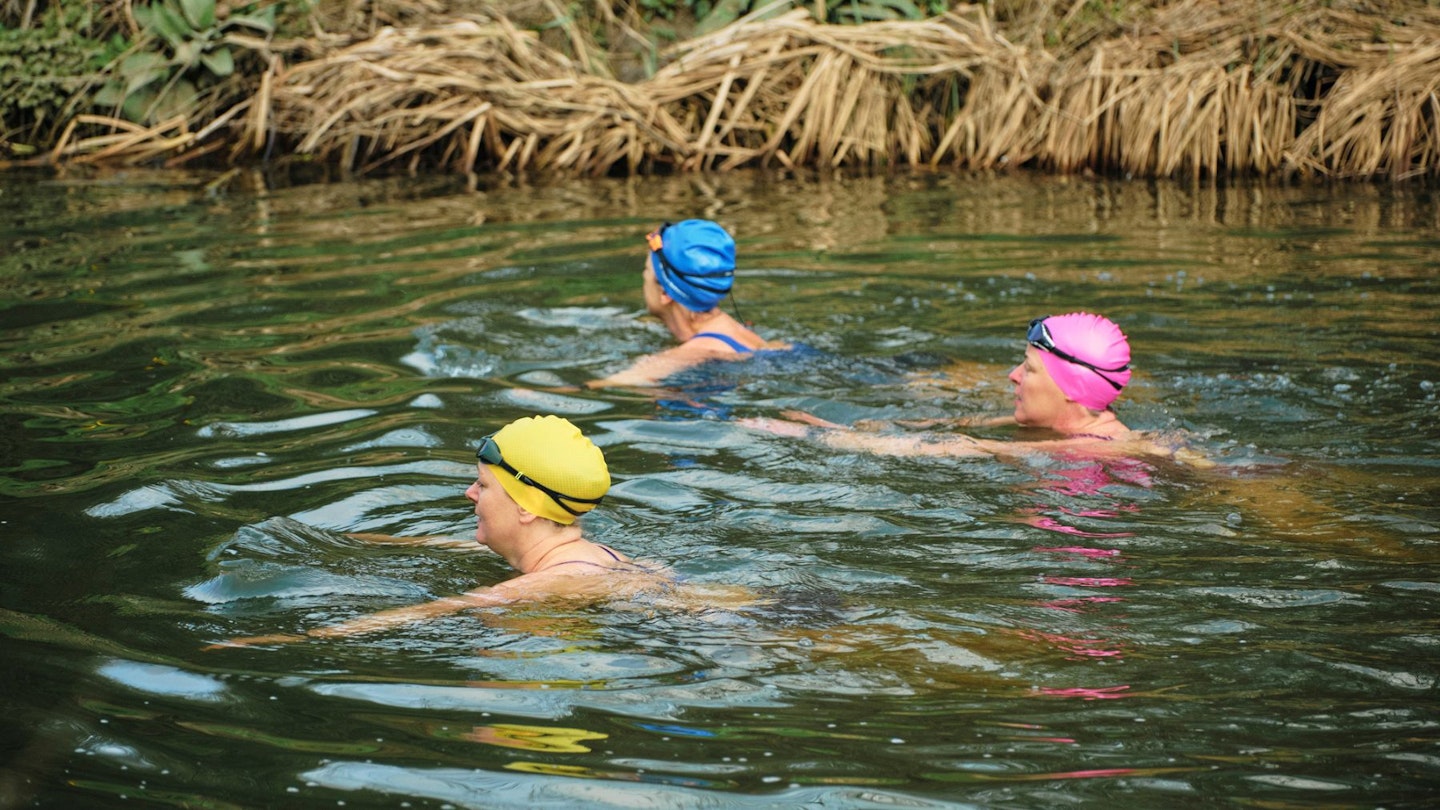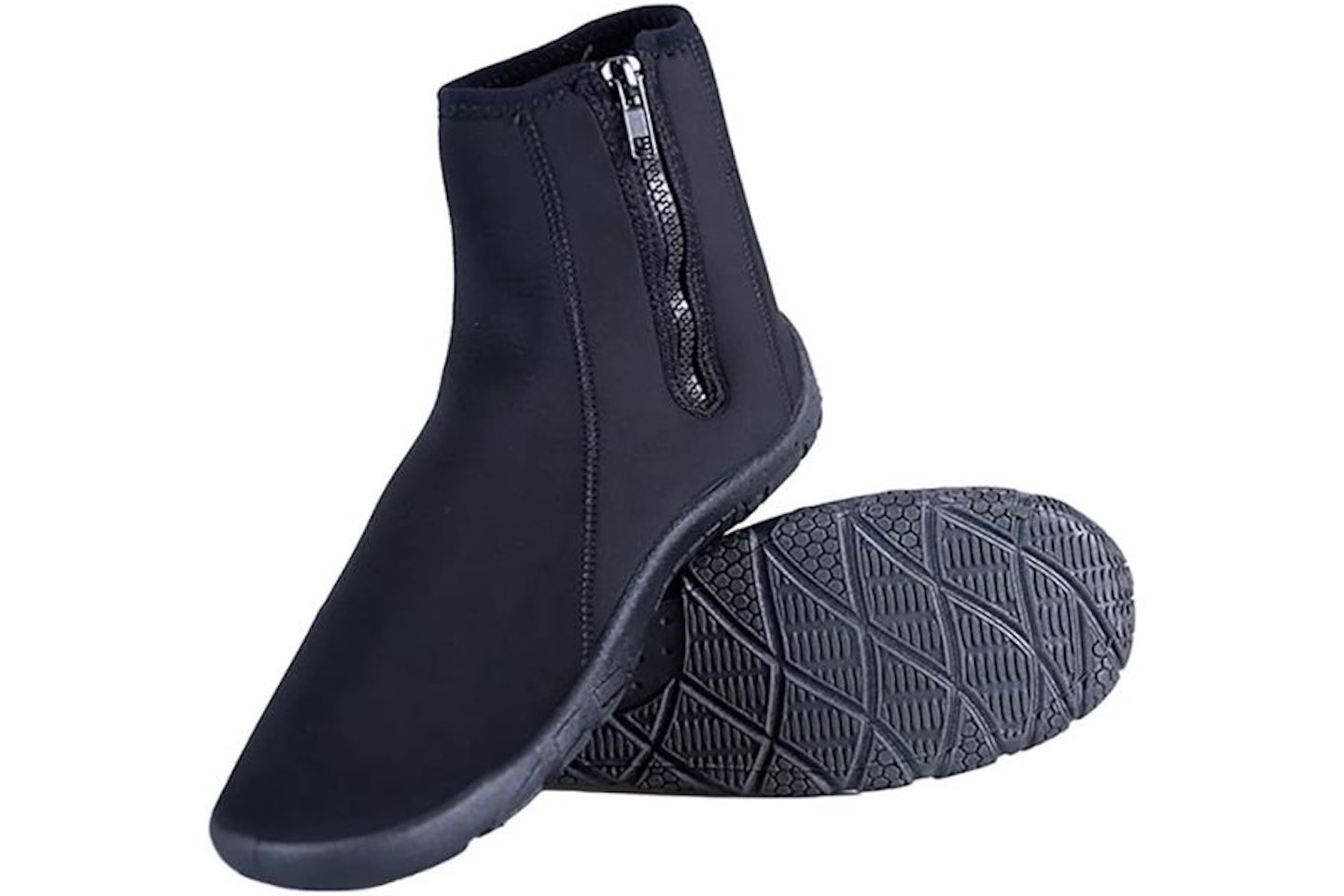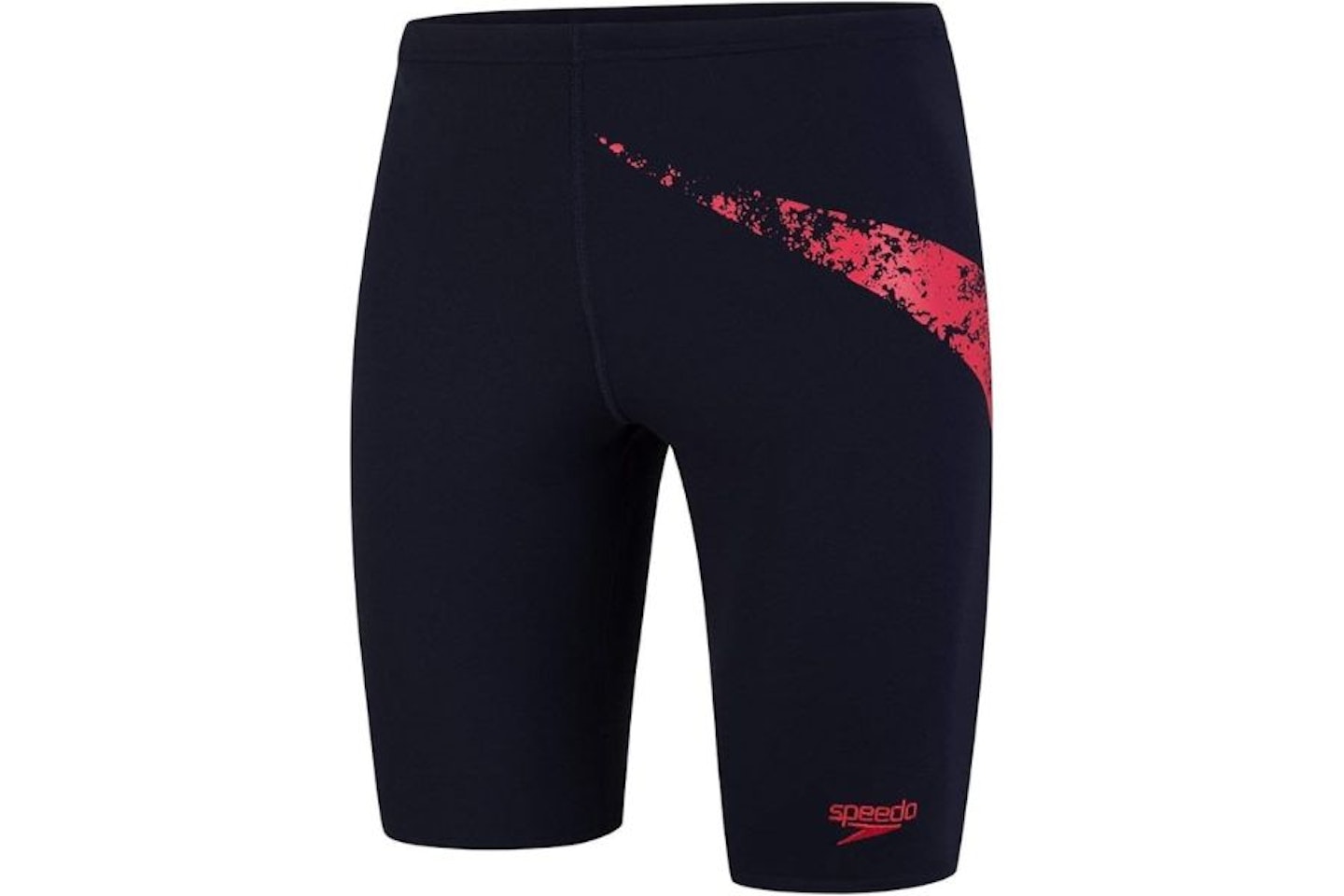Moving away from chlorinated confines to the untamed expanses of open-water swimming can feel daunting. But, forget about the predictable laps in the pool; we're talking about embracing the untamed seas, lakes and rivers that Mother Nature herself has to offer.
Before heading out to the water armed with your swimsuit, goggles, marine etiquette and maybe your (hopefully waterproof) Apple Watch, there's some preparation you should do beforehand. After all, we're dealing with open water. It's nothing to worry about, especially if you've got all the right gear and all the ideas.
The best open-water swimming essentials, at a glance
• Best wetsuit for open-water swimming: Osprey Women's Full Length Wetsuit - View on Amazon
• Best swimsuit for open-water swimming: ROXY Essentials Long Sleeve One-Piece Swimsuit - View on ROXY
• Best swim cap for open-water swimming: ZONE3 Men's and Women's Silicone Swim Cap - View on Amazon
What is the difference between open-water swimming and pool swimming?
Although they have obvious similarities, they differ primarily in their environment and conditions. John Wood is an Olympic and Paralympic swimming coach who has trained names like gold medallist Andy Lewis in the water. He explains the importance of first learning to swim straight before entering any open water.
"When swimming in open water, you don't have the black line to follow to help you stay in a straight line. Often, you will be swimming in one direction for more than the normal 25 or 50 metres you would normally do in a pool - so it's really important to learn to swim in as straight and balanced a fashion as possible," John says. "At the same time, it's useful to learn how to sight," meaning "lifting your eye line above the water to check that you are travelling in the right direction."
But things can get a little more complicated if you aim to compete in open-water swimming events. John explains: "If you're choosing to do a triathlon or open water swim event, you're not all segregated - so learning to be comfortable being bumped a bit from people swimming closer to you than you might like is good, or people who can't necessarily swim in a straight line." Saying that, he reassures, "the good thing is that in 99 per cent of cases, things aren't malicious, so you have nothing to worry about and equally you don't have to stop and apologise to everyone!"
Is it legal to swim in open water?
The legality of open-water swimming often depends on the location and local regulations. It's always a good idea to check. John advises, "if it's a beach/sea, chances are that it's fine. You may need to check rivers and lakes. Things like reservoirs might be specifically no swimming (as they might be a part of the water supply)."
How do I get started with open-water swimming?
The niche aspect of open water swimming means starting may be your biggest problem. John has over 20 years of coaching experience, so he gives us quite the insight on the easiest (and safest) way to start. He says, "The three things to think about are location (and the safety precautions that come with that), the colder temperatures, and particular skills that are extra compared to swimming in a pool."
"With regards to location, there are lots of inland locations that are set up for open-water swimming which can make life a lot easier with less to worry about. With still water and normally some sort of lifeguard setup, this makes an introduction to open water much more simple." If you're wanting to dive straight in, John says, "seas and rivers can be a little more challenging and require some planning and thought. In these cases, it's good to know about the flow of the river or the tides - and it's always good practice to swim with company to cover all eventualities. It might also be worth swimming with a tow float to keep you visible and have something to hang on to for a rest if you need it!"
Another shock new open-water swimmers may encounter is the temperatures. John points out, "most public swimming pools are around 28-30 degrees, whereas lakes will be between around 5-6 degrees in winter and up to 22 degrees in the summer." So, "as a result, don't expect to get in open water and plough on for the usual swim that you might do in the pool. You may need to take time to build up a tolerance to the lower temperatures," he says.
Furthermore, the right swimwear and dry robe is also key. John advises a wetsuit, as there's a reason why they're mandatory for most triathlons. "A wetsuit will give you buoyancy (good for safety) and maintain body heat (if not heat on your hands or feet, though you can get gloves if you're really suffering). John adds that "finally, the main skills to learn or adopt are to be able to float comfortably (use your wetsuit), to swim in a straight line and/or sight, and draft to make life easier if you're swimming with a group."
SHOP: Open-water swimming essentials, including swimwear
Please note: All prices are correct at the time of writing. Prices, stock and deals are subject to change without notice.
Best wetsuit for open-water swimming
This Osprey wetsuit is a top choice for open-water swimming enthusiasts who want a 3mm thick wetsuit. The neoprene material used in its construction provides great durability and a snug fit (this is extremely important, as John advises later on). This wetsuit also features flatlock seams to minimise chafing and maximise comfort during prolonged use. Another nice little addition is the supratex knee patches, which are rubberised patches designed to make it easy for you to kneel, even on rocky surfaces.
Pros
- Flat-lock seams for freedom of movement and comfort
- Stretch collar and anti-rub openings to prevent chafing
- Supratex knee pads to make it easy to kneel on rocky surfaces
Cons
- The neck isn't that high
| Sizes: | XS, S, M, L, XL |
| Material: | Neoprene |
| Thickness: | 3mm |
- Customer review: "Absolutely wonderful Osprey wetsuit: good price, great fit and a spotless performance. I definitely recommend it. I can’t tell about durability as I had only used it for a week, everyday use though and, as expected for such short use, has no signs of wear and tear. It was incredibly comfortable and cosy, I could even drive in it. I am 1.64cm tall, size 8/10 top and 10/12 bottom, 60kg weight and I ordered a size M that fits as a glove...more loose on top part than bottom part as I have quite small bust and large hips. Overall, 10 out of 10."
Best swimsuit for open-water swimming

www.roxy-uk.co.uk
Made by the renowned surf and lifestyle brand ROXY, this swimsuit is designed to cater to the needs of women who seek a versatile and chic swimwear option. And they can wear one under their wetsuit, too. The one-piece design ensures a secure and comfortable fit. Meanwhile, high-quality REPREVE (recycled polyester and elastane) fabric provides stretch and resilience against saltwater.
Pros
- Made from recycled polyester fabric for a soft and resistant stretch
- Long sleeves for added coverage
- Fully lined
Cons
- Zip only on the back
| Sizes: | XS, S, M, L, XL, XXL |
| Material: | Recycled polyester, Elastane |
| Sleeves: | Long sleeves |
- Our review: "The ROXY Essentials swimsuit is a great choice for beginners because of its sheer simplicity. Although it doesn't have many bells and whistles, it's a solid swimsuit to wear underneath your wetsuit. I really appreciate the stretchy REPREVE fabric for a close-fit. The most annoying part of this swimsuit is that the zip is on the back rather than the front, as it means either struggling to get it done up, or asking someone to help." Tried & Tested by Health & Fitness Writer, Gemma Lavers.
Best swim cap for open-water swimming
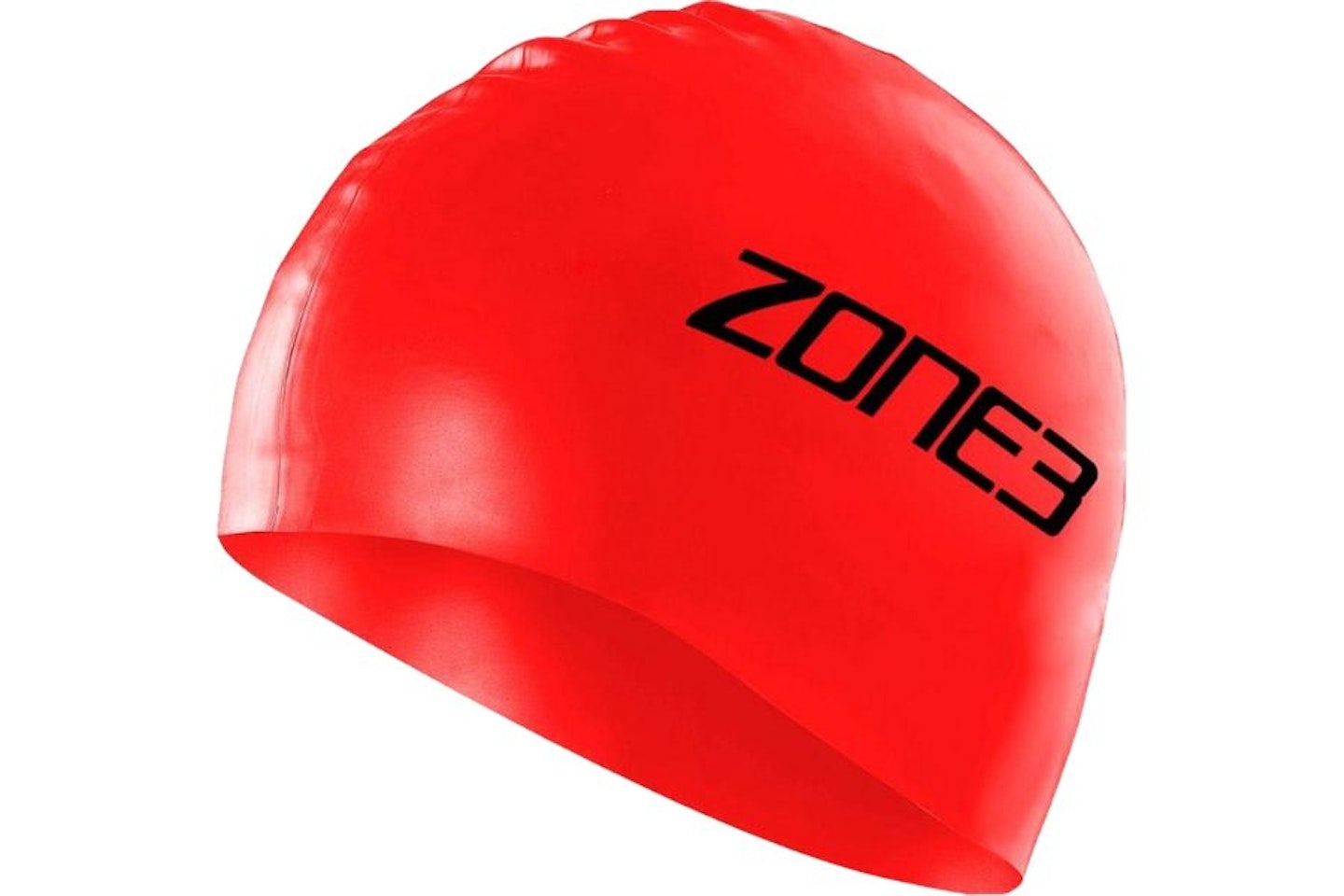
Every great swimmer needs a great swimming cap. It's a good idea to opt for a brightly coloured one when you're open water swimming as it makes you more visible to lifeguards if you get into danger. And when you ask for brightness, we bring brightness. This swim cap is available in five stunning colours; pink, orange, yellow, red and grey - so you'll always be spotted at sea. Also, the cap is made from high-quality 48g silicone, providing a snug and hydrodynamic fit that reduces drag in the water.
Pros
- Made from high-quality 48g silicone
- Easy to put on and take off
- Available in a variety of colours
Cons
- The tight fit might not be for everyone
| Sizes: | One size |
| Material: | Silicone |
| Colours: | Pink, Orange, Yellow, Red, Grey |
- Customer review: "This is my first ever swim hat. I'm 54 and after taking the plunge into wild open water swimming, so I thought I'd get a swim hat for extra visibility and to keep a bit of heat in. I didn't want to spend a lot of money and this swim hat was perfect! It is good quality silicone, very bright in colour (I purchased the yellow one) and very easy to put on. I found it makes a perfect seal once on keeping water out of the ears (and hair of course). I definitely noticed a difference in terms of warmth. It also helps keeping swim goggles on. Great product for the price."
Best swim goggles for open-water swimming
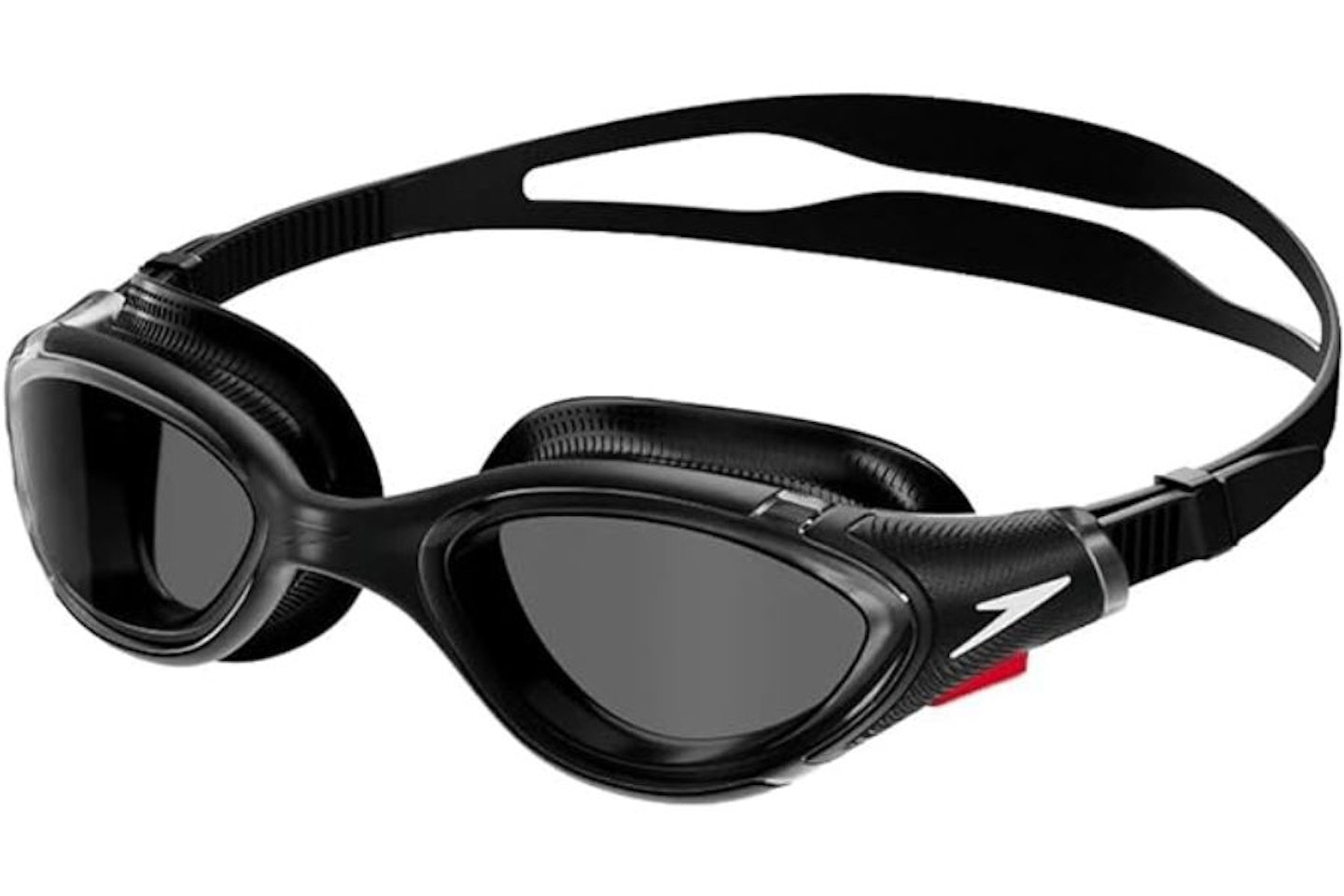
The great thing about these Speedo goggles is that they suit swimmers of all levels. The Biofuse technology, which combines soft materials with a rigid structure, ensures a snug fit that conforms to the unique contours of your face. The new wide lens shape offers an expansive field of vision, including in your peripheral. The anti-fog coating guarantees crystal-clear visibility, even during the most challenging swims.
Pros
- Features the iconic Speedo Biofuse technology for flexible comfort
- Super-soft seals with a new groove design for a good (but not overly tight) fit
- New crafted lens shape to offer excellent peripheral vision
Cons
- They don't come with a carry case
| Size: | One size |
| Material: | Unknown |
| Colours: | Black, Blue, Orange, Red, White |
- Customer review: "These Speedo swimming goggles are a solid choice for anyone hitting the pool regularly. They fit comfortably and offer a good field of vision underwater. The adjustable straps make them versatile for different head sizes. While the anti-fog feature works well, it might require occasional reapplication. Overall, they're durable, comfortable, and suitable for swimmers at various levels. A good buy for the price!"
Best boots for open-water swimming
Not only will these Two Bare Feet wetsuit boots help keep your feet warmer, they'll also make walking in and out the water much more pleasant underfoot. Plus, unlike traditional sea shoes, these boots boast a higher boot-cut, ensuring not only a more secure fit but also extra protection. And, thanks to the zipped side opening, getting in and out of these boots is a breeze, streamlining your pre and post-water experience.
Pros
- Zipped side for easy opening and fastening
- Made with a flexible rubber outsole for added grip
- The upper extends up the leg for additional warmth and protection
Cons
- Zips feel a little cheap
| Sizes: | UK 4-12 |
| Material: | Rubber sole, Neoprene upper |
| Colour: | Black |
- Customer review: "These Two Bare Feet boots are just what I wanted for sea swimming! Easy to get on and off, protect my feet from the cold and the pebbles. I don't even know I have them on when I'm swimming. Great price and have a nice rubber sole and zip. They fit snug but not too snug that they are tight! I'm a shoe size 7 and the size 7 was perfect for me! Totally recommend!"
Best shorts for open-water swimming
These Speedo Placement Jammer shorts are a fantastic choice for adventurous men. Featuring a drawstring waist for a personalised fit (and also so you know when they're on, they're staying on), these jammers also dry quickly. If you're looking for something to go under your wetsuit while open-water swimming, these jammers will offer you the comfort and support you're after.
Pros
- Integral support for enhanced comfort
- Drawstring waist for customised fit
- Quick drying
Cons
- Some reviewers found the sizes come up a little small
| Sizes: | 26, 28, 30, 32, 34, 36, 38, 40 |
| Material: | Polyester |
| Colours: | True navy/Fed red, Speedo black/Oxid grey |
- Customer review: "These Speedo Men's Boomstar Placement Jammer are clearly a very good quality pair of swimming trunks (I'm old fashioned). They fit me just great. They are skin tight but don't squeeze or rub. They don't restrict movement and they don't shrink or stretch out when wet. Nor, thankfully, do they become see-through. I've machine washed them a couple of times and they still look and feel like new. A little pricey perhaps but then you have to pay for quality."
Best gloves for open-water swimming
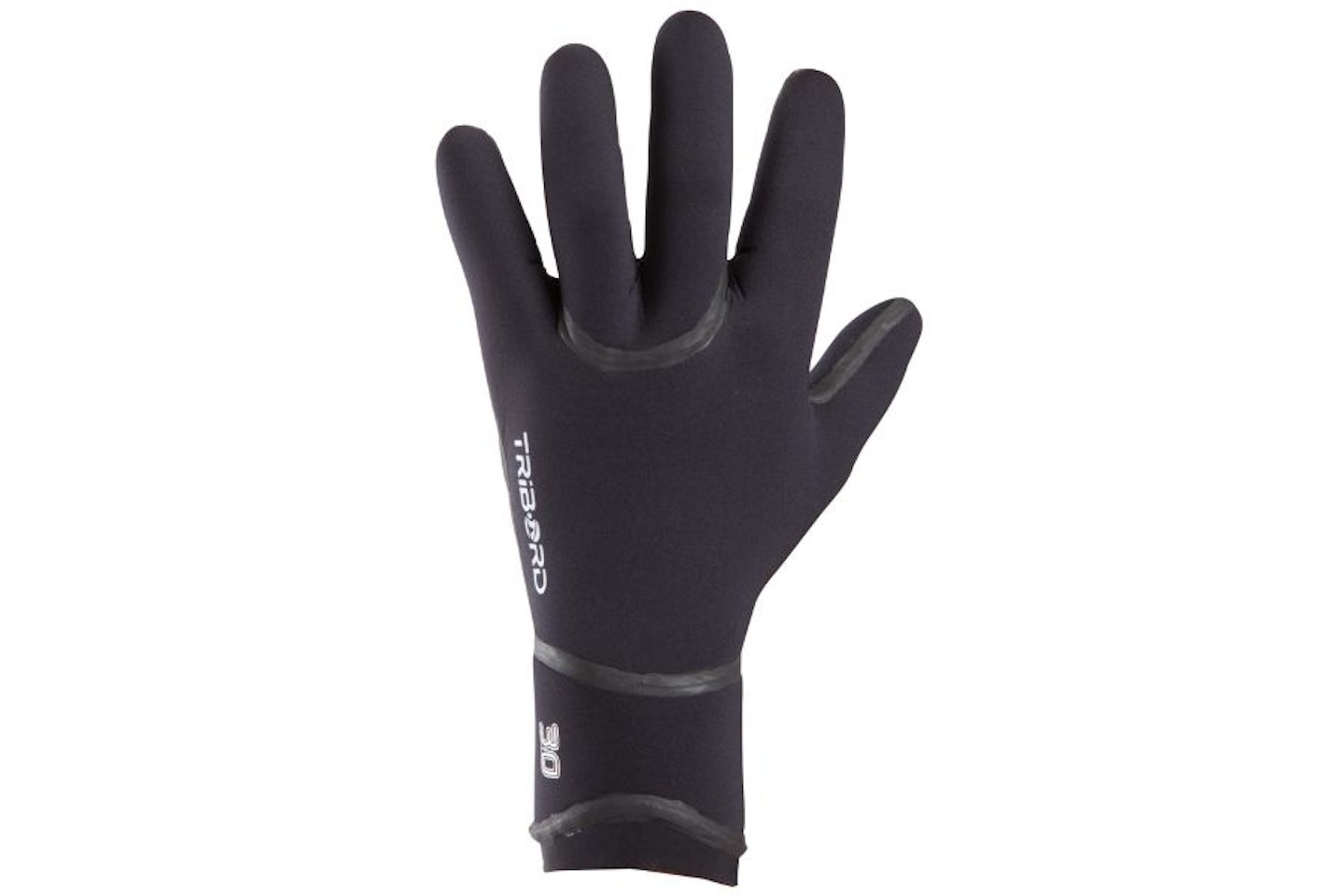
www.decathlon.co.uk
These gloves might come in particularly handy for individuals who don't mind braving the cold water in winter. If you notice that your hands are getting uncomfortably cold, investing in a pair for added warmth and comfort might be a good idea. These Olaian pair are good because they are bind-stitched to ensure they're watertight and made out of neoprene for stretch and durability.
Pros
- Made out of neoprene with stretch seams for freedom of movement
- Glued and bind-stitched with a watertight outer seal
- 3mm thickness for warmth and protection
Cons
- Built for waters between 12-17 degrees Celsius
| Sizes: | 2XS, XS, S, M, L, XL |
| Material: | Neoprene |
| Colour: | Black |
- Customer review: "At first thought these Olaian gloves were a little pricey but they seem really good quality. Good fit, thick and a game changer for cold water swimming."
Best earplugs for open-water swimming
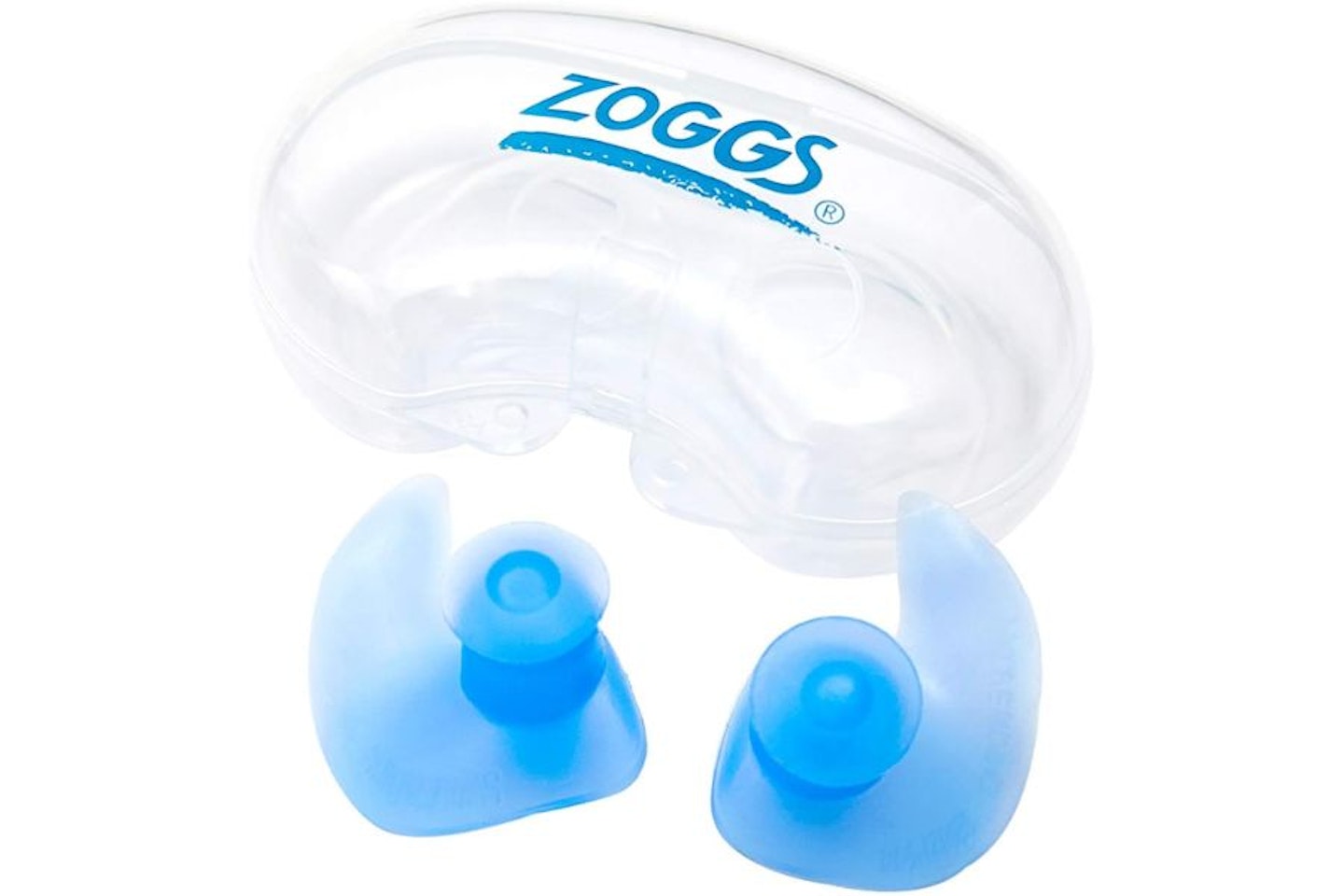
These Zoggs Aqua Plugz redefine the swimming experience by providing not just protection but also a gateway to uninterrupted tranquillity beneath the water's surface. Let's face it, nobody wants water in their ears if they can avoid it. These earplugs are a great option because of their mouldable silicone design that can be shaped to fit the outer ear. This makes them as watertight as they possibly can be while still looking discreet (we can't say the same about the orange Plugz though).
Pros
- Shaped to fit the outer ear for a watertight fit
- Comes with a case clearly marked with a L (left) and R (right)
- Hypo-allergenic
Cons
- Case is a little flimsy
| Sizes: | 6-14 Years, 14+ Years |
| Material: | Silicone |
| Colours: | Blue, Orange |
- Our review: "I can't say I use them for open water swimming, but I do generally use them in the pool as I hate the feeling of water in my ears. They do exactly what they say - keep water out. The case is super handy too otherwise I feel like I would've lost them buy now. If you're like me, and you hate the feeling of water in your ears when swimming, definitely invest in a pair as they've helped me to concentrate more on my swimming, and less on the water going painfully in my ears." Tried & Tested by Heath & Fitness Writer, Gemma Lavers.
Best changing robe for open-water swimming
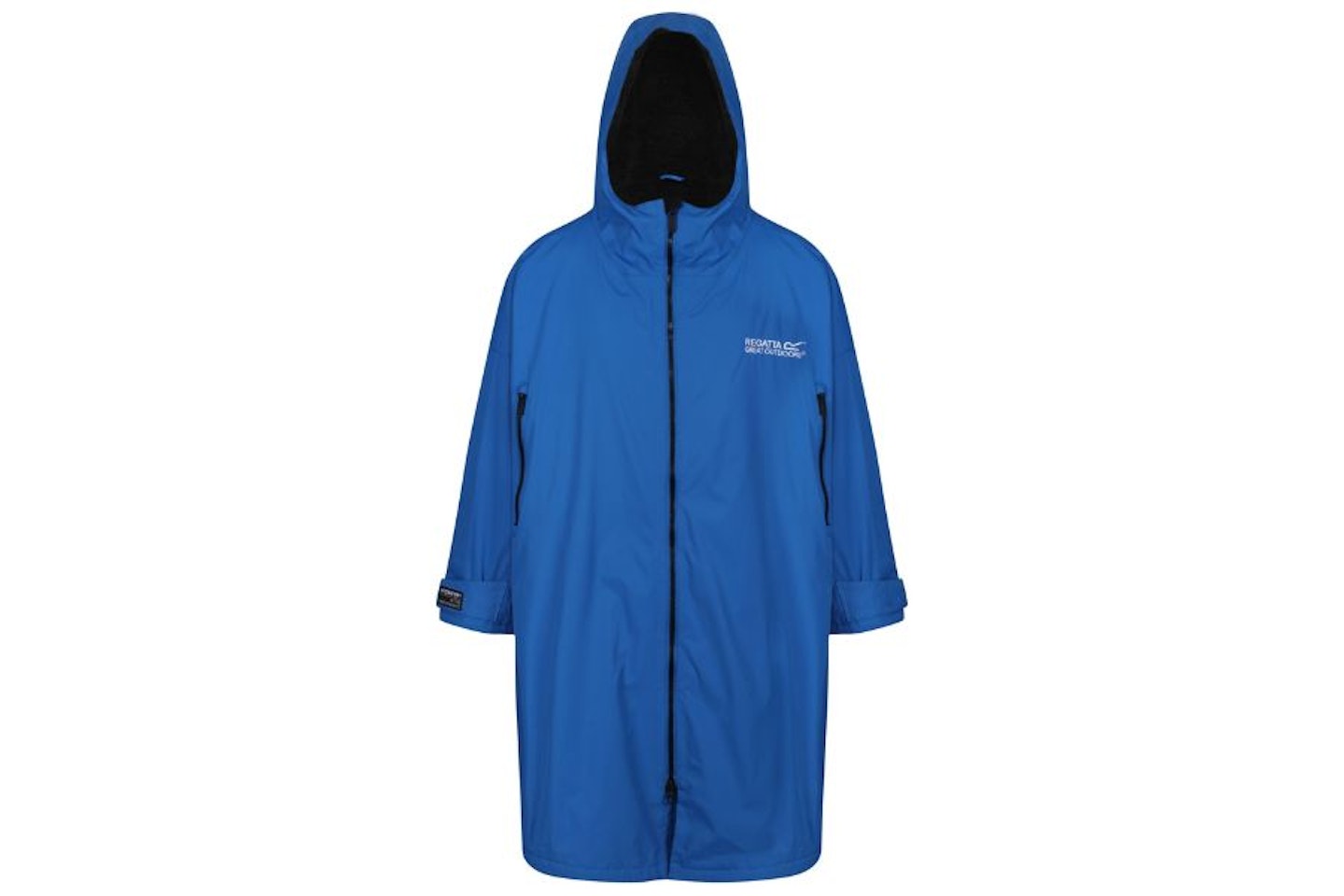
www.regatta.com
Post-swim comfort has finally arrived. Instead of freezing after your swim (which is not good nor healthy), wrap yourself in this Regatta Borg fleece-lined changing robe. Featuring their waterproof and windproof Hydrafort 5000 fabric, this robe will keep you sheltered from all the elements. Although some swimming clubs offer changing facilities, some don't. So make changing effortless and invest in this nifty creation where you can keep private and stay cosy in style.
Pros
- Features tapered seams for complete waterproof protection
- Borg fleece lined for warmth
- Inner pocket to hold all your small valuables
Cons
- Only available in the colour Oxford blue
| Sizes: | S/M, L/XL |
| Material: | Polyester |
| Colour: | Oxford blue |
- Customer review: "This adult changing robe is very well made, and serves its purpose excellently. I got it in the sale, and then with an added discount code and it was exceptionally good value for money. I love to sea swim and it's a game changer for post swims. Warms you up, and allows you to remove wet swimsuit without any awkwardness. Looks stylish too, and can be worn for other purposes, to keep you warm and dry on days out in nature. Adjustable Velcro wrist straps, good pockets and a generous size, which is what you want from a changing robe. I got the smaller size and am a size 12-14 and there's plenty of room. Highly recommend."
Best buoy for open-water swimming
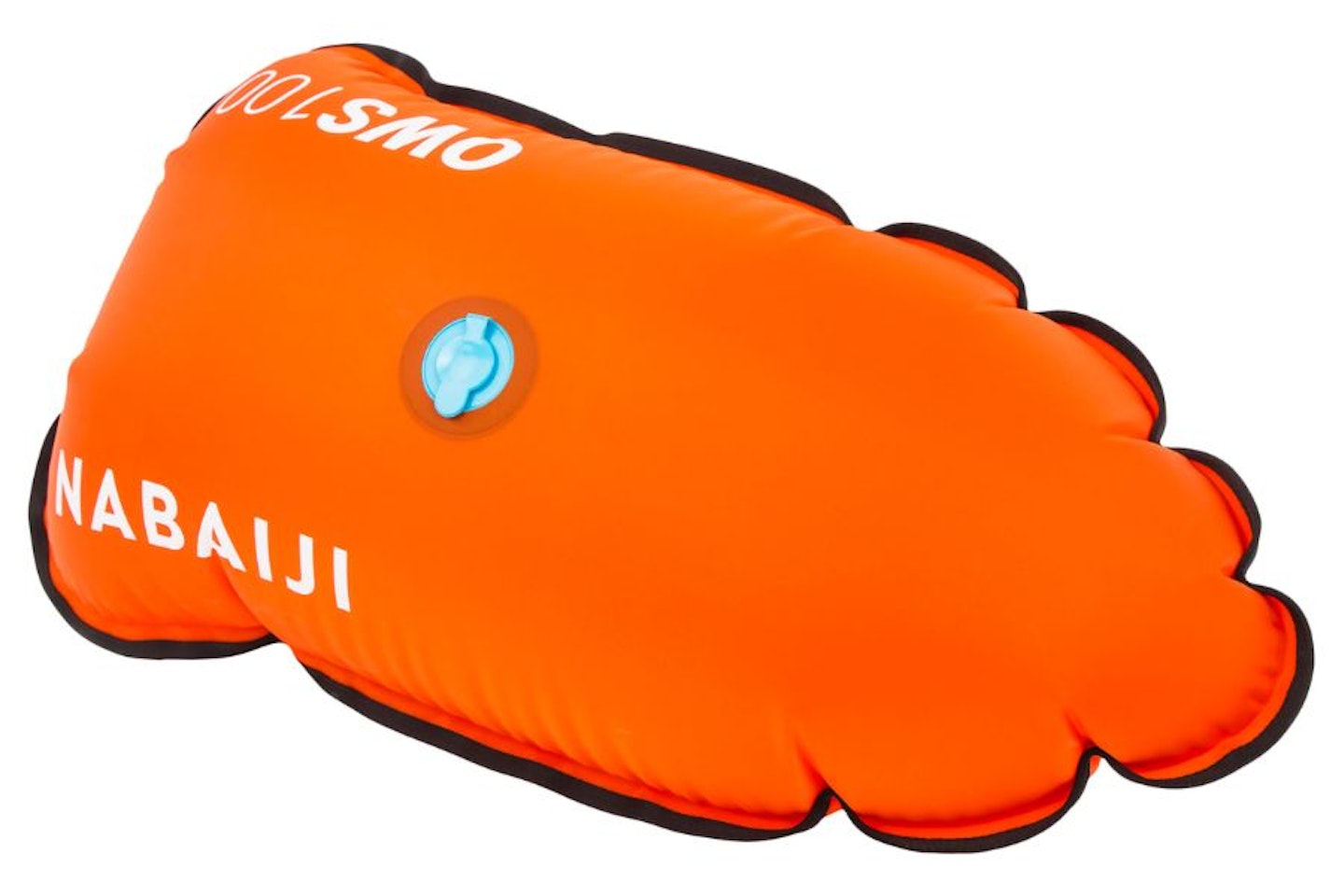
www.decathlon.co.uk
You'd like to hope you've never seen something like a buoyancy aid during open water swimming, but it's better to be prepared if needed. Using a buoy is advised so boats and rescue services can easily spot it. A buoyancy aid can also come in handy when you need to rest or begin to suffer from cramps mid-swim. This Nabaiji one is great (not only because it's bright orange) but also because it has a small pocket on the side for essentials, and it has an adjustable waist belt.
Pros
- The bright orange colour means it's easy to spot
- Has pockets to carry essentials in
- Easy to attach to your waist using the adjustable belt
Cons
- Some reviewers found the pockets didn't hold much
| Buoyancy factor: | 140 N |
| Material: | Polyamide, Polyvinyl chloride |
| Colour; | Orange |
| Dimensions inflated: | 25cm x 55cm |
| Dimensions deflated: | 37cm x 63cm |
- Customer review: "Great Nabaiji flotation aid, giving great buoyancy when needing to rest. The mesh pocket is so helpful to store glucose gels/spare goggles etc. The attached whistle is very reassuring. Excellent product, good value."
John's three top tips for open-water swimming
So now you've got all the gear and maybe some idea, we asked John his holy grail, top three tips for open water swimming.
1. Take your time getting into the water
Open water swimming isn't something to rush, as John explains: "One of the worst things you can do is rush to get in and rush to get moving. Then your heart rate spikes up, you end up out of breath and in a bit of a panic." Instead, "slow yourself down to start with, acquaint yourself with your surroundings, and then build into your swim," he says. "you may start off a little on the cold side, but you will soon warm up."
2. Make sure your wetsuit fits you well
Your wetsuit doesn't have to break the bank, but it should fit you well. "Make sure that it's pulled right into your crotch and then all the way up around your shoulders so that it fits smoothly - so it doesn't fill with water and allows as much flexibility around the shoulders as possible," John recommends.
3. Focus on posture too
Don't underestimate the importance of good posture when swimming. "Stand as tall as you can in the water, keep your spine long and your eyes looking down (except when you lift your head to sight). This will help you swim easier, swim straighter and smoother, and also make it easier to breathe," he says. "Too many people swim looking forward all the time, which makes it harder to do so much of your stroke and puts pressure on your neck and lower back."
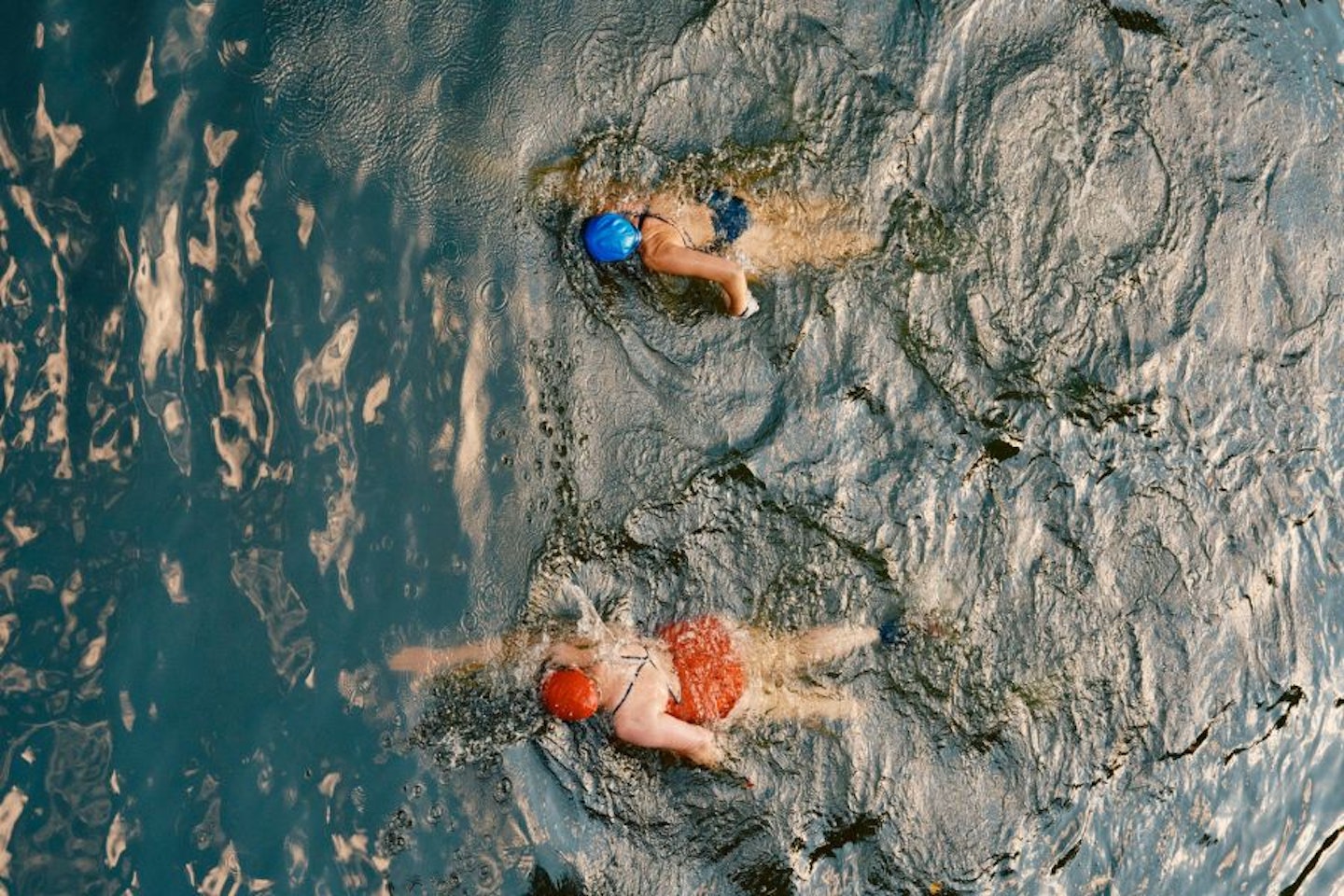
Open-water swimming advice and benefits from a real open-water swimmer
Now you've heard the advice from professional swimming coach, John, let's catch up with an open water swimmer and What's The Best reader Kerys Arundell. She shares her real-life advice for beginners, plus the brilliant benefits.
How did you get into open water swimming?
People get into open water swimming through various avenues and at various ages, often sparked by a curiosity for adventure. Kerys' passion began when she was only young.
"I was a competitive swimmer as a child, and I joined a Masters swimming squad in 2019. When COVID hit, and the pools were closed, I still wanted to swim, so I joined some friends for an outdoor session at a local lake and continued on visiting," she says. "Even though I did return to pool swimming once I was able to, a shoulder injury in a race stopped me from being able to dive in competition, so I reverted back to the open water, this time to compete."
Have you seen any physical or mental health benefits since starting regular open-water swimming?
Physically, open-water swimming provides a full-body workout that enhances cardiovascular health and strengthens muscles. Kerys explains how the natural buoyancy helps with any pains: "The cold water is really soothing for any aches and pains, and I usually come out feeling great." Open-water swimming also fosters a sense of calmness. "Most sites for open water swimming tend to be pretty tranquil too," she says, "although I get my head down and swim hard, I always take some time to have a float and enjoy the scenery, which is good to de-stress."
In addition, let's not forget "there is also the added benefit of vitamin D and fresh air, which is so different to swimming inside as pool sides tend to be quite stuffy," Kerys comments.
Has there been any times when you've felt in danger while swimming?
Swimming in open water can pose some risks. Factors such as water temperature, currents, waves and wildlife (or eels if you're Kerys) should be considered before entering open water. "I’ve only ever swum in organised lake sessions, both casually and competitively, where there are trained safety teams on hand, so I’ve always felt pretty safe (apart from an irrational fear of pikes and eels!)"
"The most danger I’ve felt is with regards to the cold, as I’m not as acclimatised to the cold water as some of my open water colleagues. There have been a couple of times where the air temperature has been cold, and I’ve had to reassess whether I can swim safely."
About the expert
This article contains expert advice from John Wood, an international swimming coach who has trained Olympic and Paralympic athletes, including gold medallist Andy Lewis. John also has first-hand knowledge from when he qualified to represent Great Britain as a swimmer both in the pool, and open water, and competed at European and World championships. Now working at Abbeydore Retreats and with over 20 years experience under his belt, John has knowledge on racing all distances of triathlon, from super-sprint to Ironman.
Gemma Lavers is a Health & Fitness Writer for What's The Best. From understanding nutrition to practising yoga and Pilates to delving into the psychology of motivation. She enjoys demystifying the latest fitness trends and staying on top of the dynamic health landscape, whether that's the best gym leggings, fitness trackers or the benefits of yoga.
When Gemma’s not writing, she can be found attending Pilates, yoga and Zumba classes. She’s also a bit of a home workout aficionado, constantly trying out new ways to keep her moving at home. Between writing, exercising and shopping, there’s nothing she loves more than hopping on a plane and exploring new cultures.
Subscribe to the What’s The Best Newsletter to keep up to date with more of the latest reviews and recommendations from the rest of the What’s The Best team.
